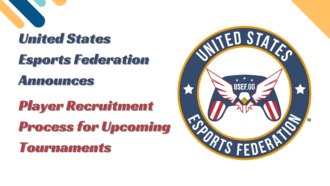Meta Implements The Watermarking Feature For Some AI Products
Meta Platforms (META.O), a Facebook parent company, announced that its text-to-image production product envisioned with Meta AI chatbot will soon add invisible watermarking to increase transparency.
Facebook-parent Meta Platforms said that Imagine with Meta AI chatbots will include invisible watermarking in the coming weeks to increase transparency. In late September, the social media company released AI-powered devices like photo-realistic image bots and smart glasses that answer queries. It can withstand cropping and screen snaps. The success of Microsoft-backed OpenAI’s chatbot ChatGPT has inspired companies to use substantial language models to create AI-powered products to attract investors, innovate, retain consumers, and engage new ones.
Link Of The Post: https://about.fb.com/news/2023/12/meta-ai-updates/
In July, Meta launched its sophisticated Llama 2 large language model for public and commercial use, which was used to create Meta AI. The company is testing over 20 new ways that generative AI can enhance Instagram and WhatsApp experiences.
The Menlo Park, California-based startup is bringing envisioning outside of conversations to the U.S. and testing search across its products. Using artificial intelligence to make the most significant improvements across its platforms since introducing short-form video reels in 2020, Meta Platforms Inc. hopes to get consumers to spend more time on its social media applications next year. On Facebook, Instagram, Messenger, and WhatsApp, the firm is exploring over 20 generative AI tools for search, ads, business communications, and more. It will eventually use those tools widely.
“How can we improve our community?” How do we help people express themselves? “How do we build more useful products?” asked Meta’s generative AI vice president Ahmad Al-Dahle in an interview.
Meta must keep providing people with new reasons to use its applications, which produce most of its revenue while convincing investors that record investment in AI and virtual reality is worthwhile. Meta’s primary social networks are advertising giants, but Facebook and Instagram users have plateaued at 2 billion and 3 billion monthly.
Meta faces severe competition from TikTok, whose US users spend roughly twice as much time on the short-form video platform as on Meta’s apps. Snap Inc. and Adobe Inc., makers of Photoshop, have introduced generative AI-powered chatbots, picture editors, and video creators. ETA is investing billions in AI infrastructure, talent, and development to compete. When CEO Mark Zuckerberg proclaimed the year of efficiency, AI was one of the areas that witnessed investment and growth, not cuts.
Meta has built pricey data centers and released open-source versions of the Llama big language model that supports chatbots, but its few new consumer products have received mixed reviews. Next year, the startup plans to add capabilities to Meta AI, a virtual assistant that answers inquiries and generates photorealistic visuals. The technology works in Meta’s augmented reality glasses and in one-on-one and group chats.
“We want it to be one of the world’s most-used AI assistants,” Al-Dahle stated. He added that Meta is testing a feature to pull reels and other third-party content into discussions.
Meta hopes more third parties will utilize its AI Studio to build app chatbots for businesses and creators. Facebook’s Groups and Marketplace AI algorithms will propose topics to discuss and things to browse. Imagine will expand beyond chats to a website where enthusiasts can take free photos. Meanwhile, all AI-generated photographs will include invisible watermarking to identify them.

















